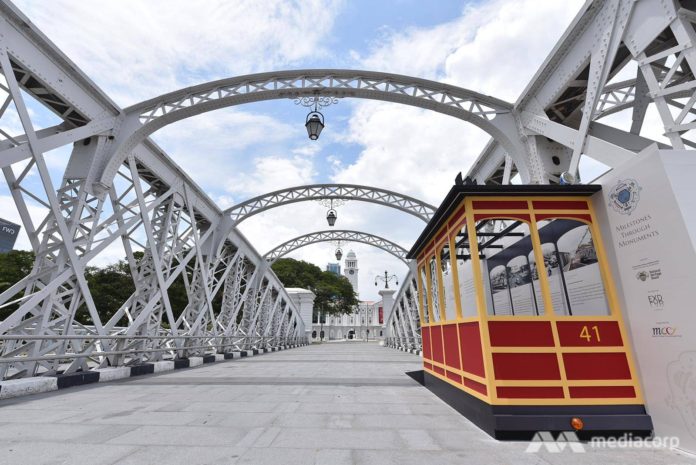SINGAPORE: An additional S$15 million will be set aside over the next five years to support the restoration of national monuments, announced Minister for Culture, Community and Youth Grace Fu on Tuesday (Oct 15).
This is the third and largest injection of funds into National Monuments Fund since it was launched in 2008. It started off with S$5 million, followed by a second round of funding amounting to S$11.77 million in 2015.
The fund is available only to monuments owned or managed by non-profit or religious organisations, which have to be able to financially co-support the restoration works.
A total of 28 organisations have benefitted from the fund so far, said Ms Fu.
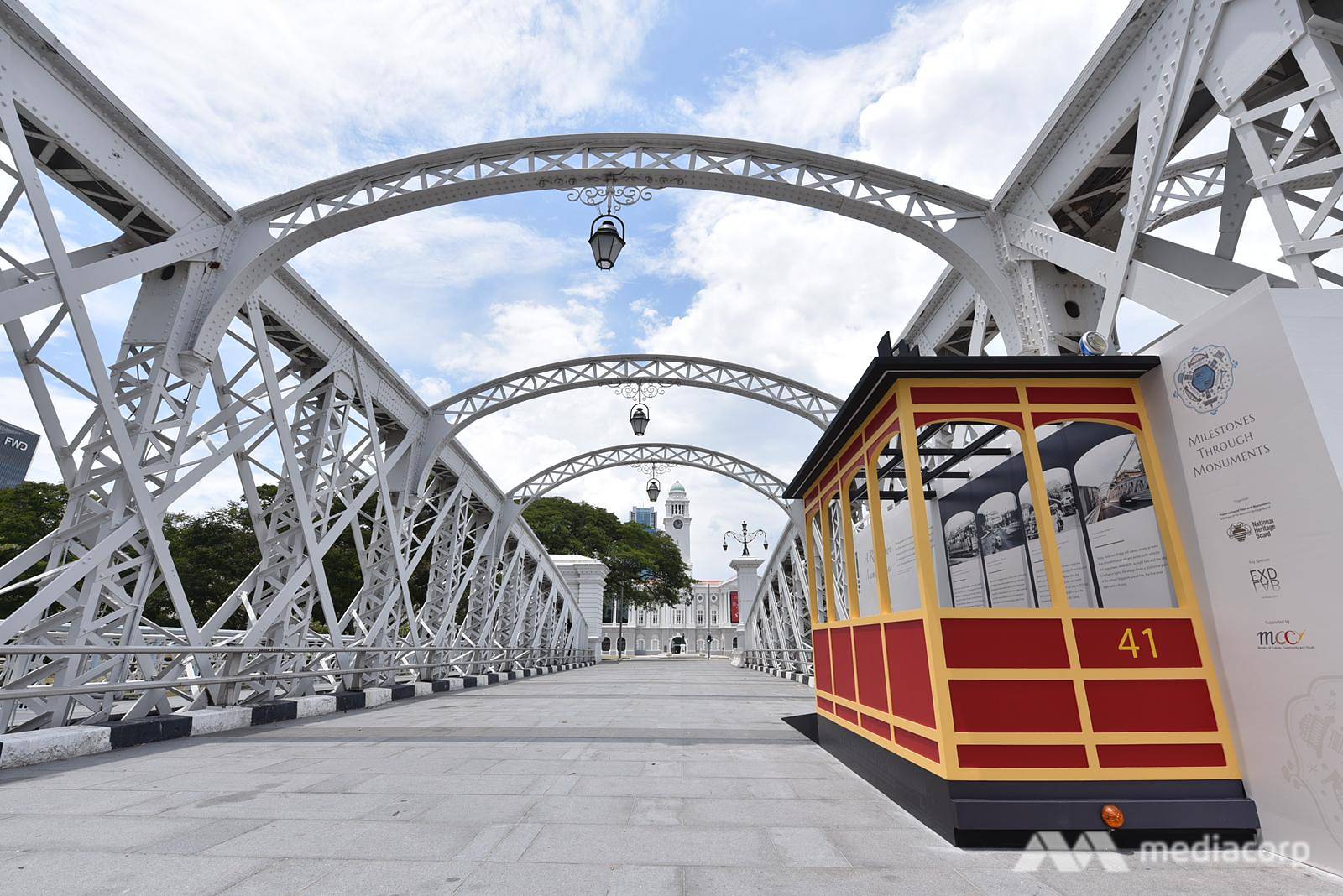
View of the art installation at Anderson Bridge. (Photo: Jeremy Long)
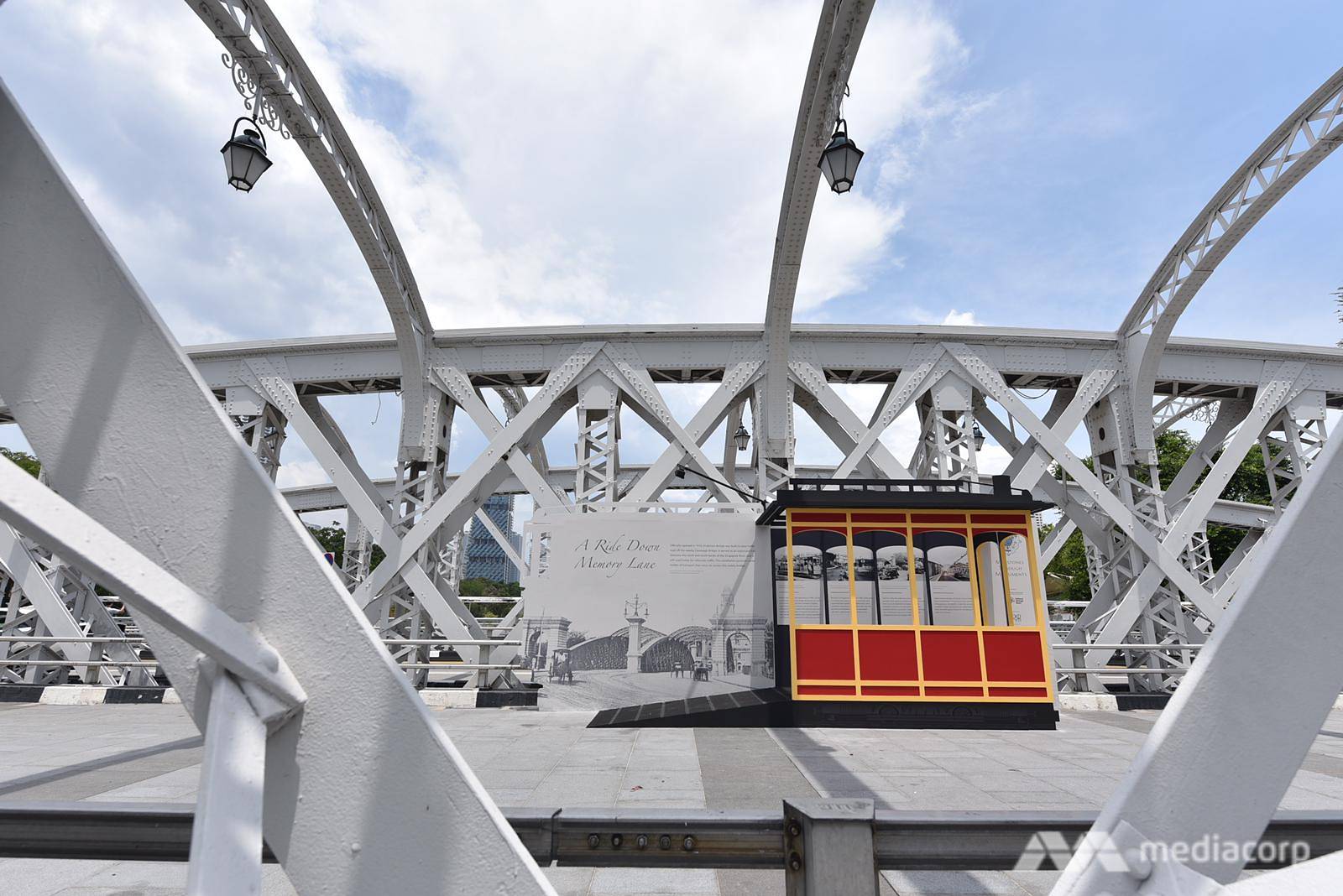
Three Singapore River bridges now have the same status as other landmarks such as the Istana, Esplanade Park Memorials and Raffles Hotel. (Photo: Jeremy Long)
The additional funding was announced at the gazetting of three Singapore River bridges – Cavenagh, Anderson and Elgin – collectively as the country’s 73rd national monument.
This gives them the same status as other landmarks such as the Istana, Esplanade Park Memorials and Raffles Hotel.
“The gazette of the Singapore River Bridges gives them the highest level of protection under our laws. This enables the Government to preserve these magnificent structures so that future generations of Singaporeans will also be able to understand and appreciate our heritage,” said Ms Fu.

Minister for Culture, Community and Youth, Grace Fu, delivers a speech at the Asian Civilisations Museum for the launching of a new programme, Milestones Through Monuments, in conjunction with the upcoming gazette of the Singapore Bridges. (Photo: Jeremy Long)
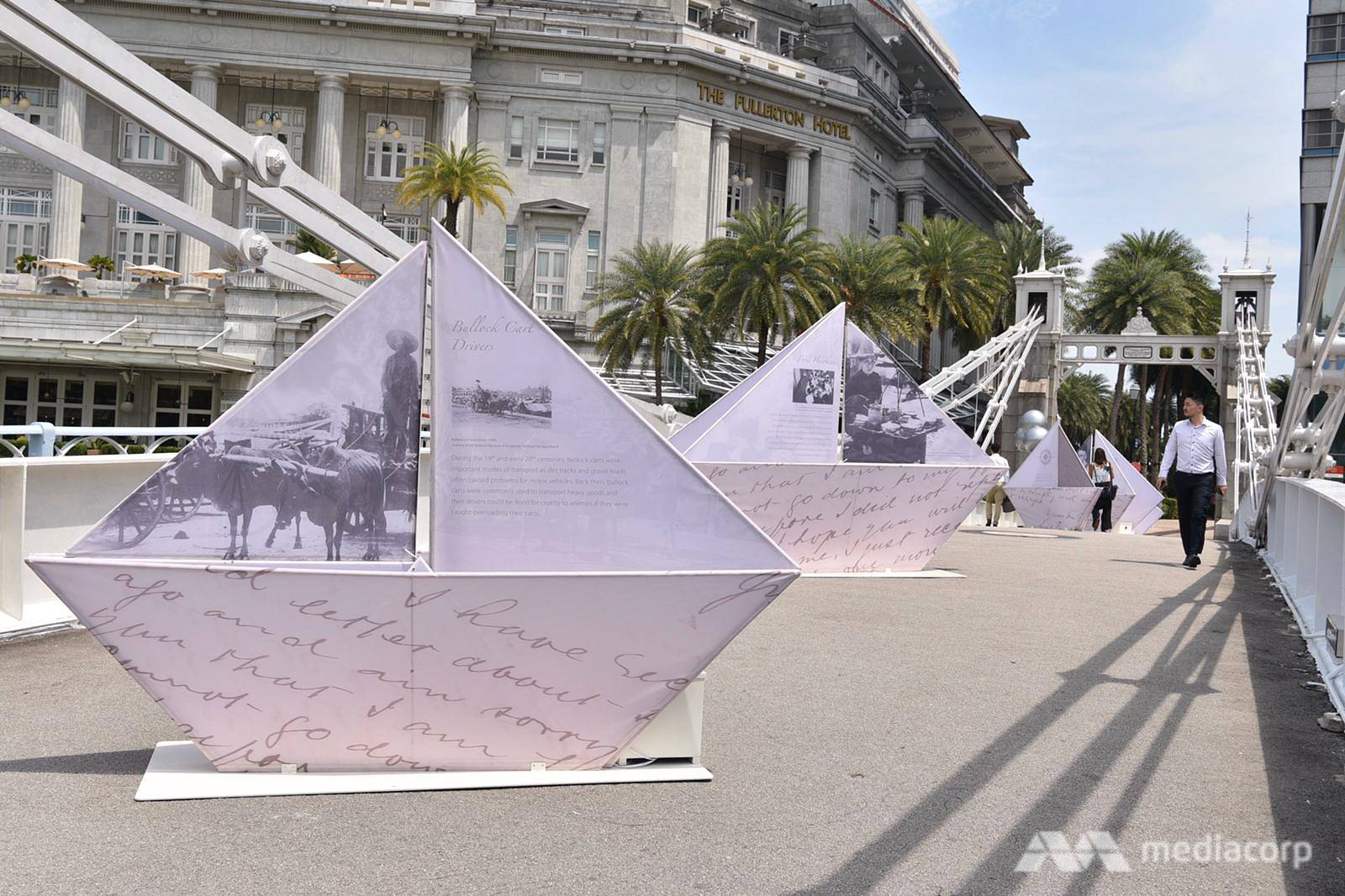
Art installation on Cavenagh Bridge. (Photo: Jeremy Long)
By gazetting the bridges as a national monument, the National Heritage Board (NHB) will be able to outline a specific set of maintenance guidelines for the three bridges, allowing the board to preserve their originality.
This means that any maintenance or restoration works for the bridges will have to use materials as close to the original as much as possible.
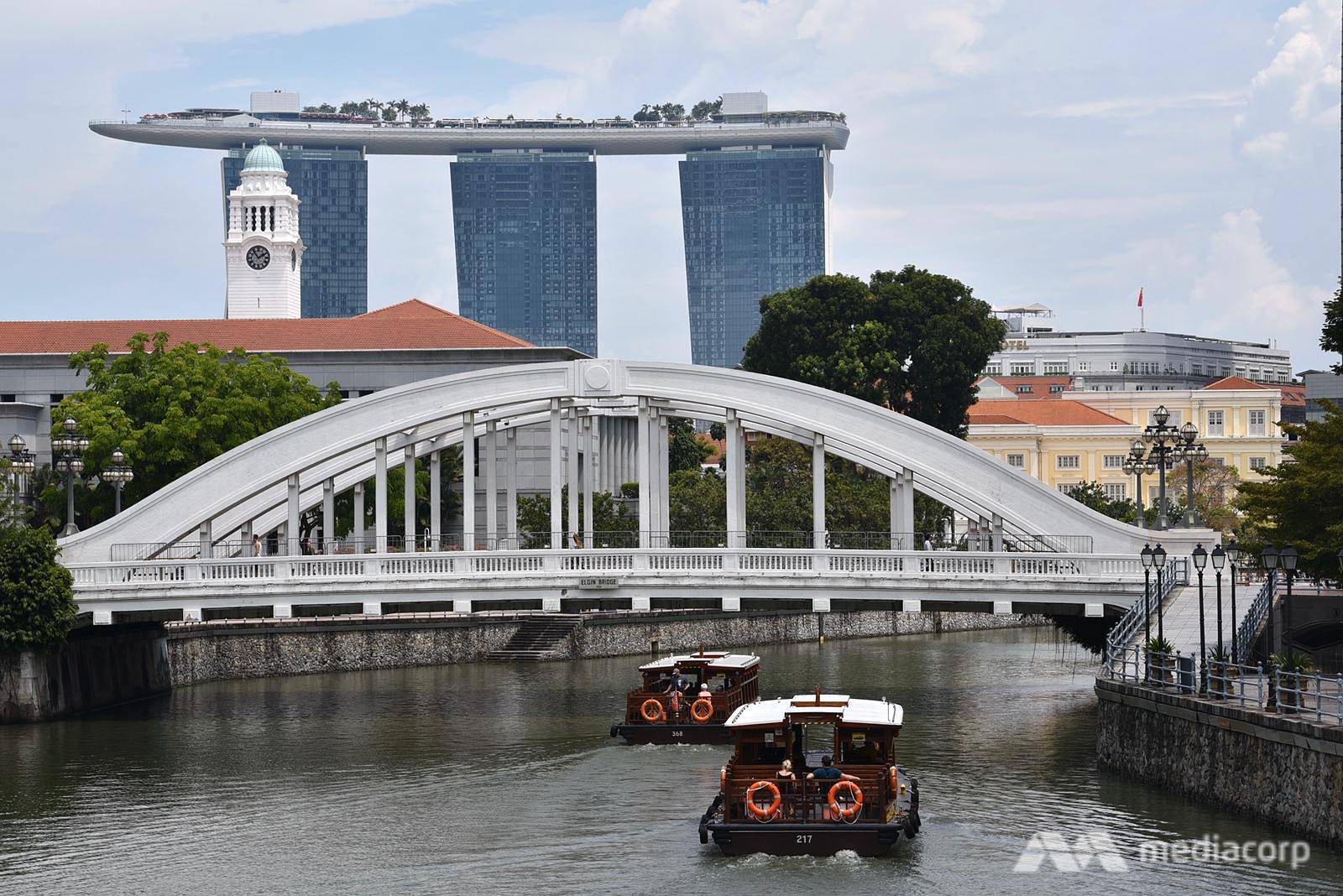
View of Elgin Bridge and Marina Bay Sands. (Photo: Jeremy Long)
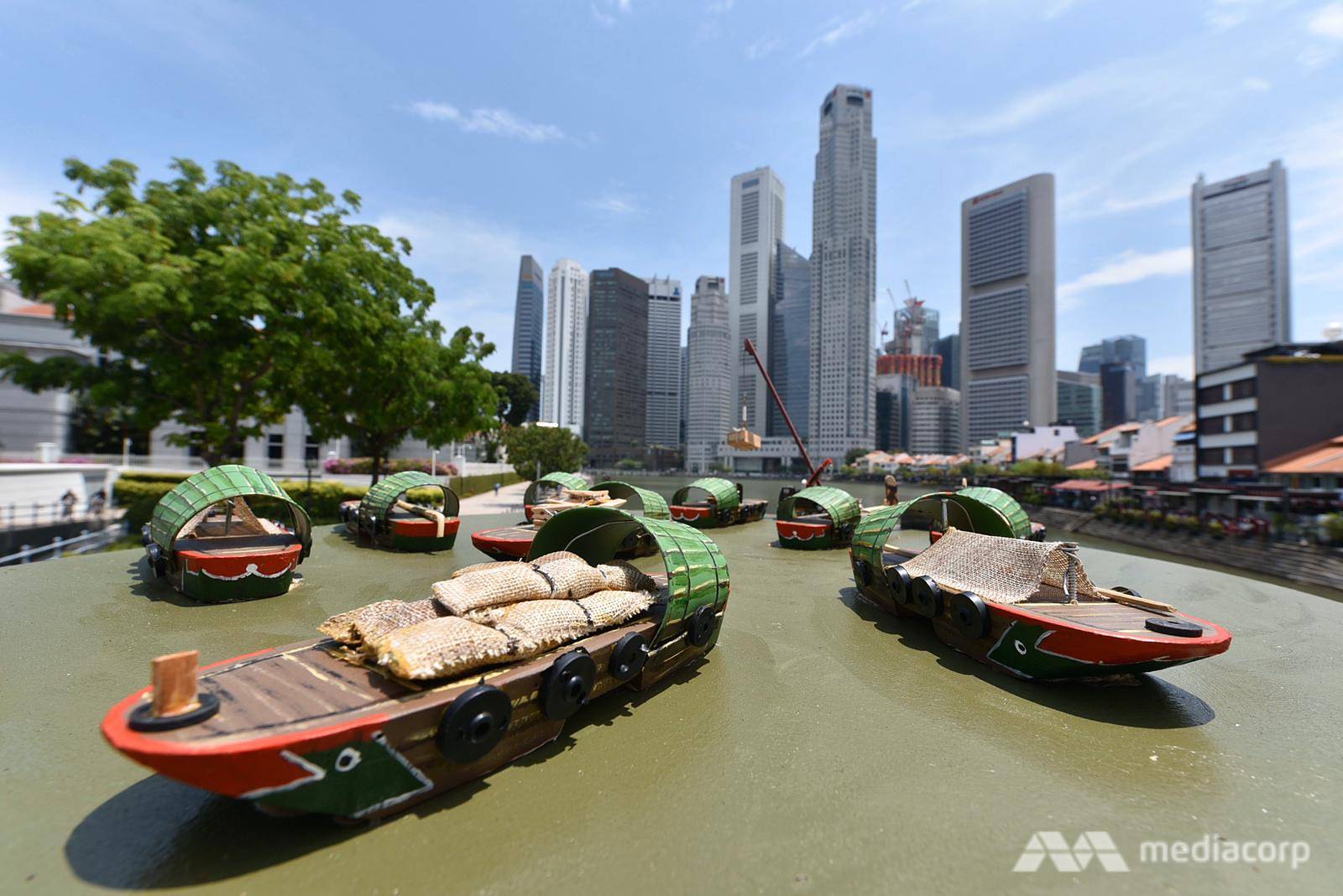
View of the art installation at Elgin Bridge. (Photo: Jeremy Long)
Cavenagh Bridge was constructed in 1869, followed by Anderson Bridge in 1909 and Elgin Bridge in 1929. The structural components of all three bridges were manufactured in Britain before they were shipped to Singapore, said NHB.
“With their strategic locations at the mouth of the Singapore River, the bridges symbolically connected Singapore with the world as they facilitated trade and transport links that were necessary for the growth of Singapore in the 19th century,” said NHB.
“Together, the bridges eliminated the need for boatmen to ferry passengers across the river by linking the south bank of the river with the north – serving the critical function of connecting the mercantile and commercial side with government offices located on the north bank of the river.”
View of the Singapore skyline. (Photo: Jeremy Long)
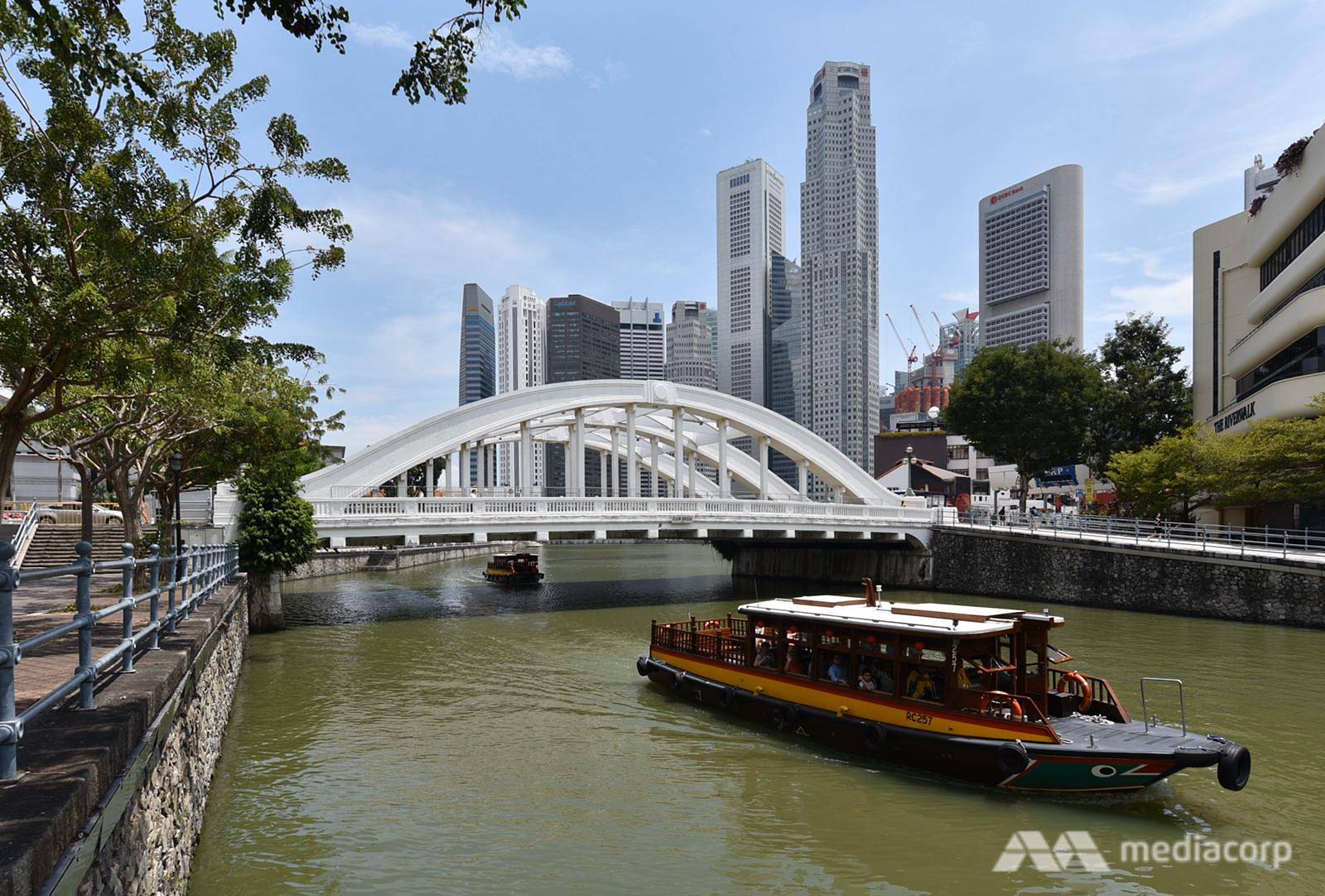
View of Elgin Bridge and the Singapore skyline. (Photo: Jeremy Long)
Deputy Prime Minister Heng Swee Keat had announced in August that the Padang and the Singapore River bridges would be gazetted as national monuments, to commemorate Singapore’s bicentennial this year.
On Tuesday, NHB also launched a programme called Milestones Through Monuments, which features art installations and walking tours.
Installations include a life-sized tram where visitors can learn about the various modes of transport that ran across Anderson Bridge, as well as supersized origami boats on Cavenagh Bridge.
The programme will run until Oct 28.
